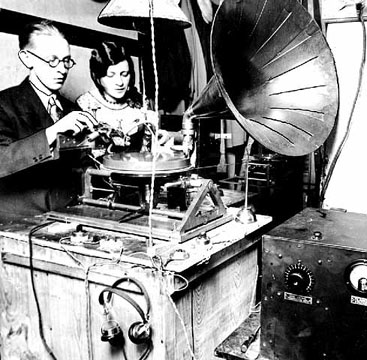This week’s blog is from Keegan Hockett, who curated this exhibit. Keegan Hockett is a graduate music student pursuing his Doctor of Musical Arts degree in Bassoon Performance and Pedagogy with a secondary area in musicology. He also works as a research assistant for the Office of Community Engagement, finding opportunities for UI students who wish to engage with their local communities.
Listening to recorded music in our day and age is a simple process that is easy to take for granted. For many of us, it looks something like this:
Step 1: Choose your preferred device
Step 2: Open your music library or favorite streaming service
Step 4: Search for a band, song, genre, etc.
Step 5. Hit Play
Digital audio formats allow music to be at our fingertips, but this ease of access has been a long journey in the making – sound could be recorded and reproduced as early as 1877! Early recordings were made using an analog, mechanical process, but these “records” had many limitations. Sound quality, storage capacity, and longevity have all improved through engineering innovations, whether they be electrical, chemical, or mechanical. Some recordings formats were short-lived and have been largely forgotten but others remain ubiquitous in contemporary culture. Vinyl records, cassette tapes, and CDs are made of different materials, have different forms, and work in different ways, but each are capable of holding sounds captured from a moment in time. To learn more about how these formats work, check out the Lichtenberger Engineering Library’s newest exhibit on recording technologies! Additional resources on acoustics and sound engineering are available in our stacks downstairs.
